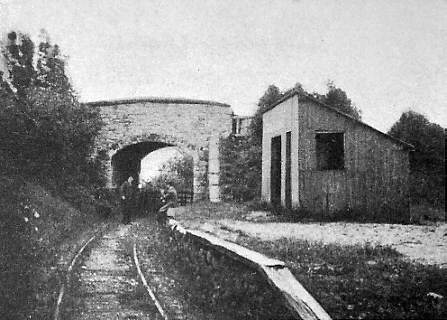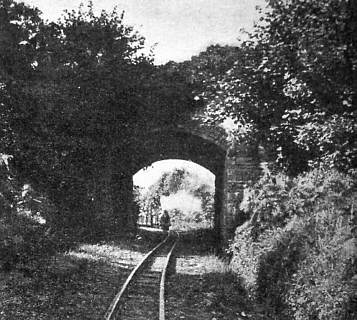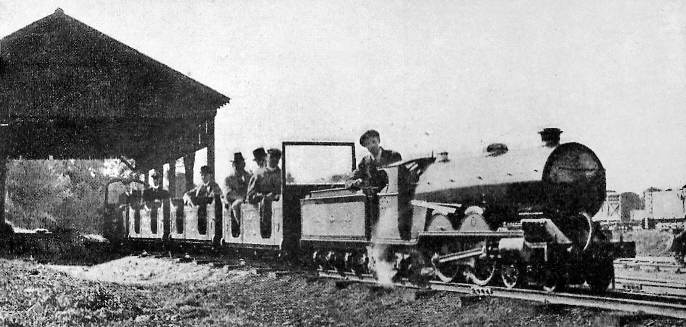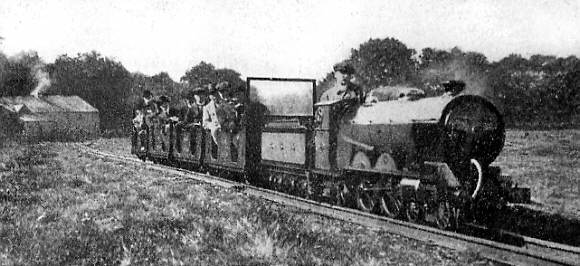

LA'AL RATTY IN 1915
Inevitably, one of the first descriptions of the re-opened and re-gauged Eskdale line was published in the Railway Magazine, in December 1915. I shall restrain myself from commenting on matters such as the alleged gauge of the old line, the distance from Boot to the summit of Scawfell, or the description of the road from Eskdale to Ambleside, and simply present the article as written:
 | Eskdale Green Station and over-line bridge, before the reconstruction |
 | A picturesque view near Muncaster, showing approaching narrow-gauge train |


